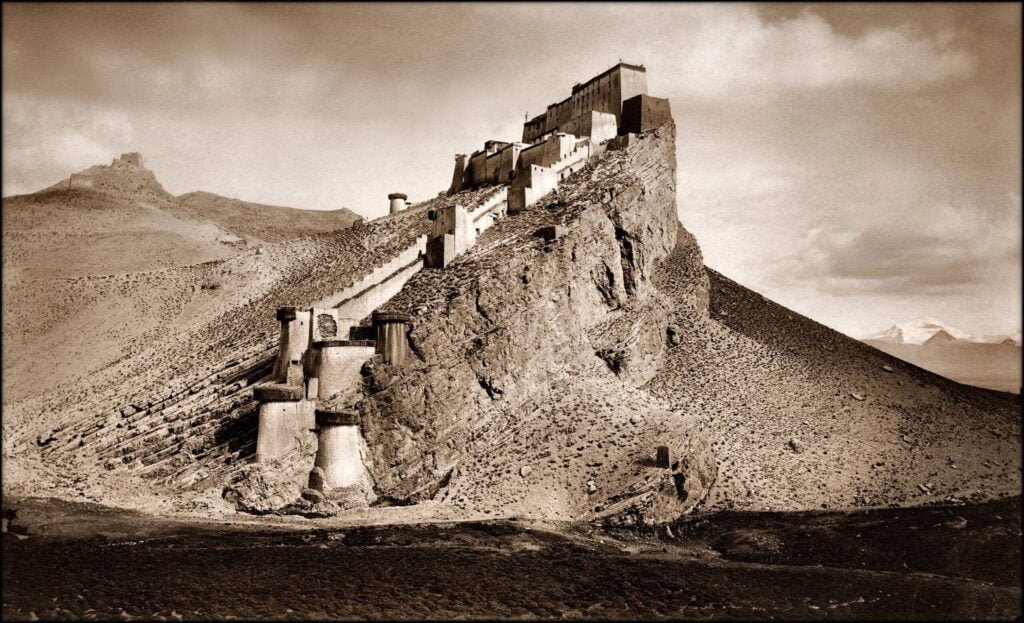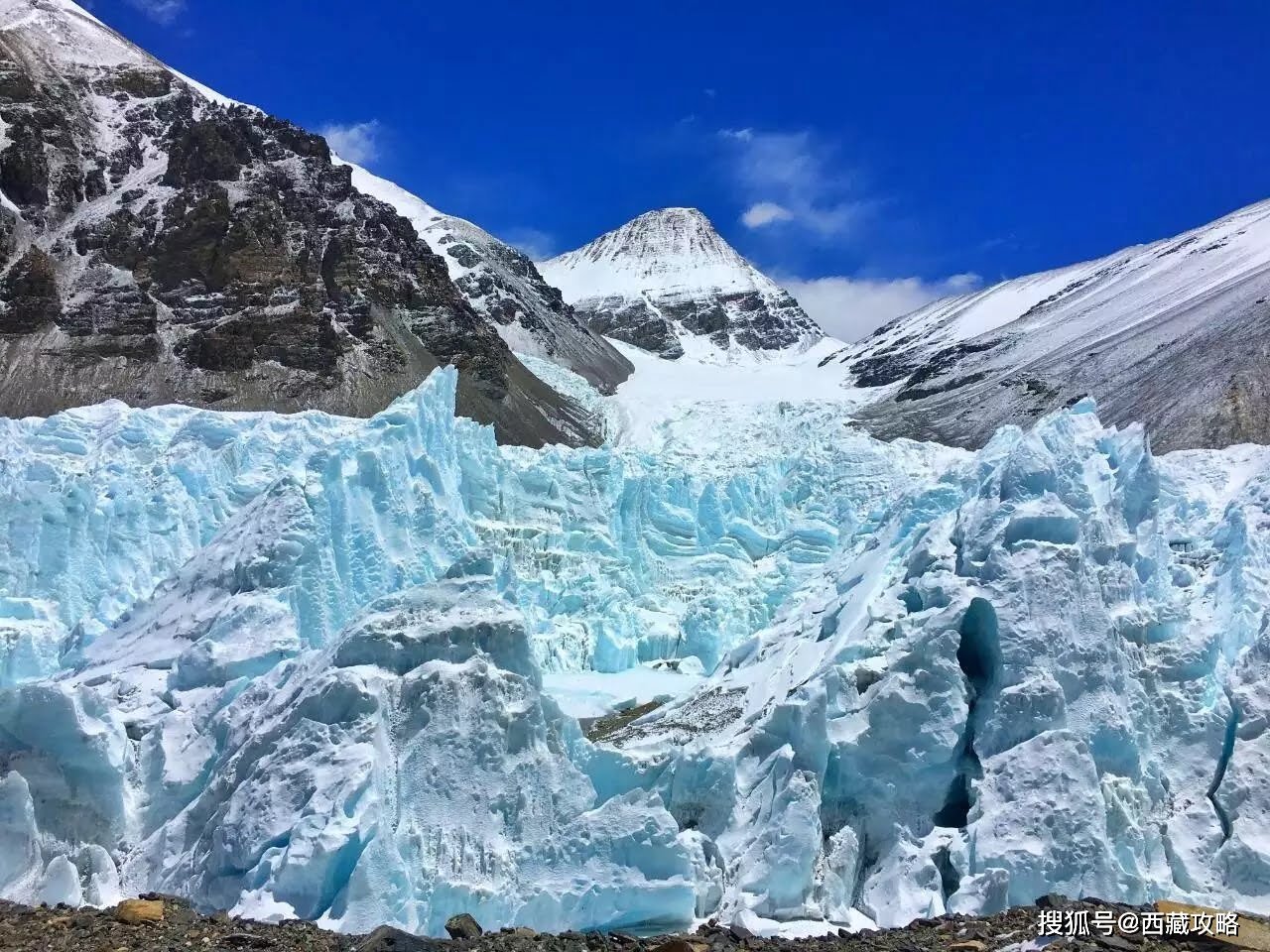Kampa County, known as Gam-pa (གམ་པ་རྫོང) in Tibetan, nestles serenely and culturally rich in the northern foothills of the central Himalayas in southern Tibet. “Near the snow mountain,” the meaning of the name Gampa, aptly places it near the stunning Dzomu and Kangqên Gyaluo snow mountains. Geographically, Gampa lies between latitudes 27.9°N to 28.8°N and longitudes 88.2°E to 88.9°E.
Kampa’s varied history matches its diverse landscape. Different eras have named it “Gamba” during the early Sakya rule and “Kamba Dzong in the Ganden Phodrang Administration. The Phakdru regime initiated the region’s administrative journey in the 14th century as part of Tibet’s traditional Ü-Tsang province. Officials formally established the modern county of Kampa in 1962, briefly merged it with Dingjie County in the 1960s, and re-established it in 1965. Today, Kampa, part of the Shigatse area, includes one town, four townships, and 29 villages, spanning 3,938.48 square kilometres.
Population and Administration of Kampa County
As of 2020, Gampa County has a thriving population of 11,276 residents. The county seat, located in Kampa Town at an impressive altitude of 4,960 meters, serves as the region’s administrative centre. A significant milestone was reached in February 2019 when Kampa successfully exited the list of poverty-stricken counties.
Spiritual Heritage of Kampa County
Kampa County is revered as the birthplace of Gendun Drup, the First Dalai Lama, in 1391. His birthplace, Kongma Township, became a site of great spiritual importance. Despite early life challenges, including a traumatic robbery on his birth night and his father’s death when he was seven, Gendun Drup rose to become a prominent monk and one of Tsongkhapa’s most esteemed disciples. Tsongkhapa, the founder of the Gelug school of Tibetan Buddhism, heavily influenced Gendun Drup. The First Dalai Lama’s legacy includes establishing the Tashilhunpo Monastery in 1447, where he served as the Abbot until his passing in 1474.

Exploring the Unique Geography and Climate of Kampa County
Topography and Natural Landscape
Kampa County, nestled in the grandeur of the Himalayas, boasts continuous snow-capped mountains surrounding it, with high plateau hills making up 70% of its terrain. Barren mountains and hills dominate the sparse vegetation in this area. The region’s topography gradually descends from north to south, with a relative altitude difference of about 170 to 200 meters. The average elevation is above 4,700 meters, with the highest point reaching 6,763 meters and the lowest at 4,375 meters.
Climate Characteristics
Kampa County experiences a temperate, semi-arid plateau monsoon climate. The area is characterized by its dry, cold weather, scarce rainfall, abundant sunshine, and windy conditions during winter and spring. It enjoys an average of 3,200 hours of sunshine per year, with annual precipitation around 300 millimetres. The frost-free period lasts approximately 60 days, and the average annual temperature hovers around -2°C. Natural disasters in the area include droughts, frosts, hail, and sandstorms.
Gampa County’s Notable Products
Kampa County’s economy primarily revolves around pastoralism, supplemented by agriculture. It boasts about 4 million acres of grazing land, mainly for yaks, sheep, goats, horses, mules, and donkeys. The agricultural land spans over 20,000 acres, cultivating crops like highland barley, peas, and potatoes.
The region is renowned for its unique products like Tibetan carpets, felt products, cushion covers, and Tibetan paper. Additionally, it’s a source of precious medicinal herbs like cordyceps, fritillaria, snow lotus, anemarrhena, and lithospermum. Particularly famous is the Kampa sheep, a celebrated Tibetan product.
Kampa Sheep: A Culinary Delight
Kampa sheep boasts tender meat, delicious taste, and a lack of gamey flavour, making them highly coveted throughout Tibet. Historically, these sheep serve as tribute items for high-ranking religious figures. Their cooked meat fills the room with an enticing fragrance and offers a taste so delightful that many describe it as “melting in the mouth.” The soup prepared from Kampa sheep, known for its rich flavour, deeply satisfies the palate and contributes to their reputation as “the finest sheep in the world.”
Recently, initiatives to improve the quality and value of Kampa sheep have been underway. The creation of the Gampa Sheep Breeding Association and breeding bases marks a significant advancement. The Kampa Sheep Gourmet Festival, another endeavor, showcases this delicacy. A robust marketing network has also developed, with product agents established in cities such as Chengdu, Xi’an, Chongqing, Wuhan, and Kunming. Kampa sheep products, including frozen varieties, are now available in major supermarkets like Walmart and Carrefour across mainland China, broadening their market reach.
Tourism and Transportation in Gampa County
Rapid Development of Road Infrastructure
Kampa County has rapidly developed its road infrastructure, boasting a 489-kilometre road network. This network comprises two dedicated highways covering 183 kilometres and five rural roads spanning 185 kilometres, ensuring road access to every township and village. The Kampa-Quimei highway, completed in 2004, significantly improved connectivity, reducing the distance to Shigatse City to just 150 kilometres. The county also connects to other major roads, including the China-Nepal and Lhasa-Yadong highways.
Travel Tips for Visitors
- Getting to Kampa from Shigatse: Shigatse is approximately 307 kilometres from Kampa. Visitors can take a bus from Shigatse to Gampa, or opt for self-drive or hired car services. The cost of hiring a car typically ranges between 1,000 to 1,500 yuan (for reference purposes).
- Border County Regulations: Kampa, being a border county, requires visitors to obtain a border pass from public security departments. Travel agencies or car rental services can also arrange this, though they might charge a service fee.
Visitors should note that these travel tips and transportation details are essential for planning a smooth and enjoyable trip to Kampa County, ensuring a hassle-free experience in exploring this unique and culturally rich region of Tibet.






